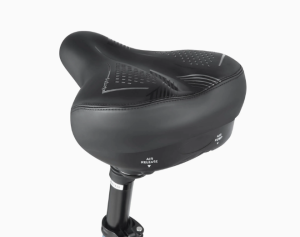Electric bicycles, commonly known as e-bikes, come in various forms, but primarily they can be categorized into two distinct types: electric bikes (e-bikes) and electric assist bikes, sometimes specifically referred to as electric assist mountain bikes. Both types enhance the cycling experience by incorporating electric motors, yet they differ significantly in how they integrate this technology and the level of assistance they provide to the rider.
Electric bikes are equipped with a motor that can independently propel the bicycle without any pedaling effort from the rider. This feature allows for a more relaxed ride, especially beneficial for commuting or for those who may have physical limitations that make pedaling difficult. The motor is activated through a throttle on the handlebars, and the bike can reach considerable speeds, making it closer to a moped in functionality.
On the other hand, electric assist mountain bikes are designed to provide power only when the rider is pedaling. This type of e-bike is gaining popularity among mountain biking enthusiasts because it offers the perfect blend of human and electric power. The motor supplements the rider's pedaling force, providing a boost to climb steep hills or to cover longer distances without the exhaustion that would typically accompany such intense physical activity. The assistance is usually regulated by the pedaling cadence and force, ensuring a more natural biking experience that still requires rider engagement.

The difference between these two types of e-bikes is primarily the rider's experience and the intended use of the bike. While a standard electric bike can replace a car for short to medium distances, providing a no-sweat commute, an electric assist bike is typically used for recreational purposes, particularly trail and mountain biking, where the physical component of pedaling is still a desired part of the experience. Riders of electric assist mountain bikes can enjoy the sport with less strain, which is particularly appealing to those who love the outdoors but may not have the same endurance as more experienced cyclists.
Moreover, regulations for e-bikes can differ based on whether they are throttle-controlled or pedal-assist, with the latter often being more widely accepted in areas where motorized vehicles are restricted. This distinction is crucial for riders who wish to access non-motorized trails and parks where traditional e-bikes may not be allowed.
Understanding these differences is essential for consumers making an informed decision on which type of e-bike suits their lifestyle and cycling needs best. Whether one opts for an electric bike for its effortless mobility or an electric assist mountain bike for an enhanced yet authentic biking experience, both types offer a modern twist to traditional cycling, promising a future where travel is not only efficient but also enjoyable.